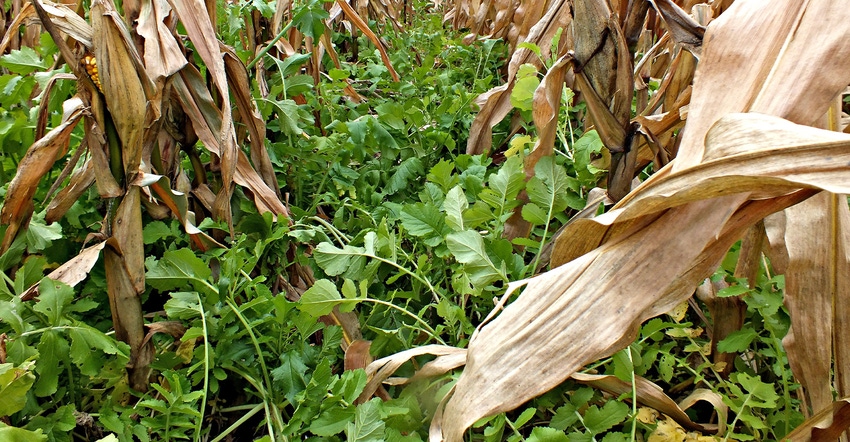
Attendees of the recent South Dakota Soil Health Conference, held Jan. 15-16 in Watertown, S.D., caught a glimpse of what may be next in the Dakotas for soil health. Practices included:
Intercropping and companion cropping. Derek Axten, Minton, Saskatchewan, Canada, described how he is cutting costs, increasing profits and boosting soil health by growing two cash grain crops in the same field at the same time and separating the grains after harvest. Most of his intercropping involves flax with canola and other crops.
Food grade conditioning plants. Axten showed pictures of a food grade conditioning plant that he is building on his operation, Axtell Farms. Since he has to separate intercropped grains, Axten decided to build a food grade facility. Companies are interested in sourcing food grade grain from farms using regenerative soil building practices like his operation, Axten says.
Composting. Axtell Farms has begun composting to provide some of the fertilizer they need. They mix cow manure from a neighbor’s beef feedlot with flax straw that they bale and screenings that they collect when separating intercropped grains. They produce a dry compost that they spread on some of their cropland and a liquid compost tea that they inject into the soil. Several South Dakota and North Dakota farms are composting, too, but the compost tea on a scale as large as at Axtell Farms is new.
60-inch corn rows. David Kruger, Twin Brooks, S.D., planted some of his corn in 60-inch rows instead of 30-inch rows and seeded an 11-way cover crop mix between the rows. He hopes to get the same yield per acre from 60-inch corn as 30-inch corn (the per acre plant population is the same) because individual plants in the 60-inch rows will have more access to sunlight than plants in 30-inch rows. The extra space between the 60-inch rows makes it possible to consistently establish a vigorous cover crop between the rows during the growing season.
In four replicated strip trials across a 20-acre plot in 2019, Kruger’s 60-inch corn yielded 174 bushels per acre. His 30-inch corn yielded 192 bushels per acre, or 18 bushels per acre more. However, the 60-inch corn was much more consistent across the strips than 30-inch corn. Yields varied only 5 bushels per acre from the best to the poorest ground. The 30-inch row corn yields varied by 51 bushels per acre. Kruger plans to plant a 60-inch corn trial again this year. He’s getting help from Soil Rx, a soil health consulting company based in Belview, Minn.
About the Author(s)
You May Also Like






